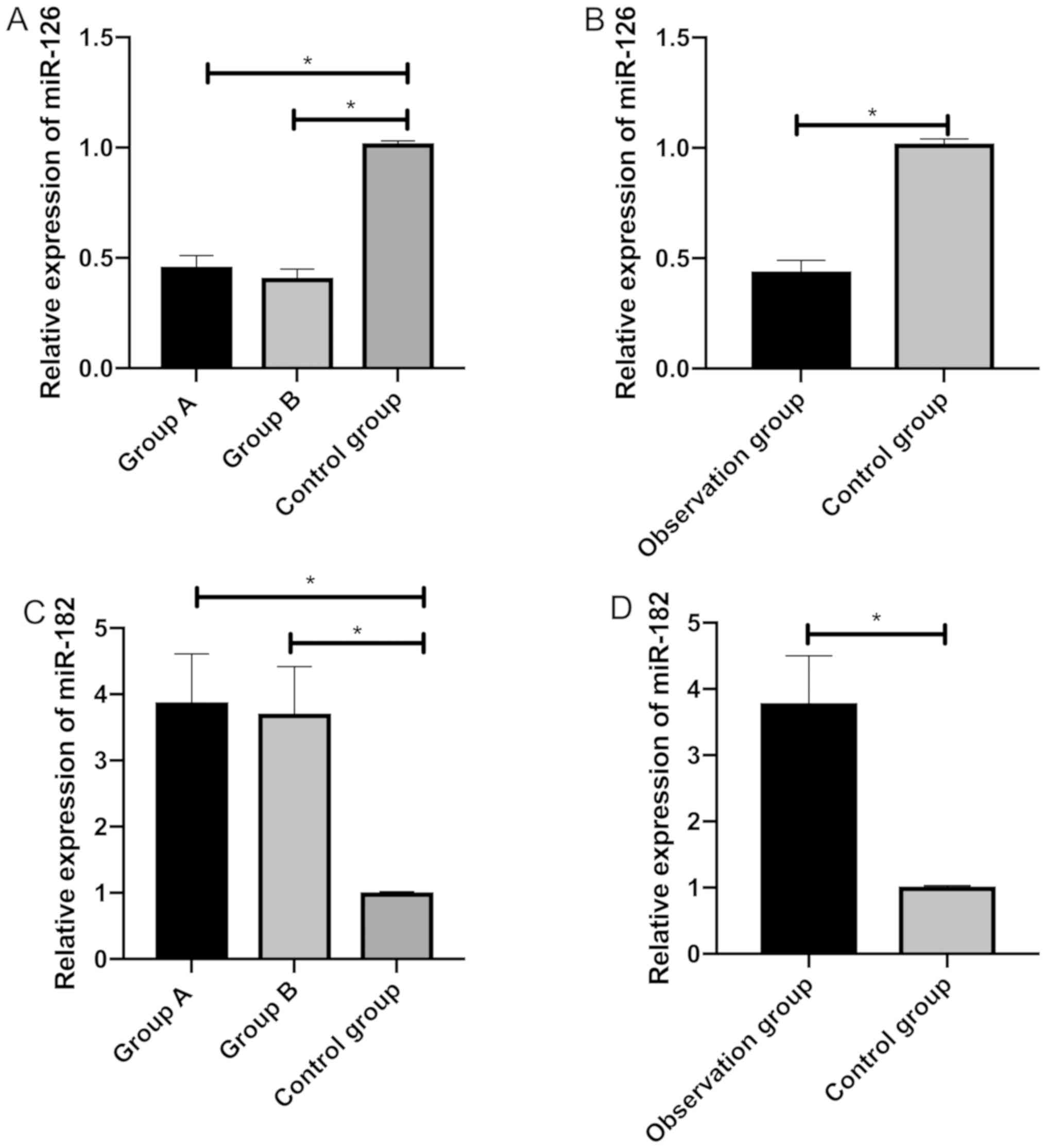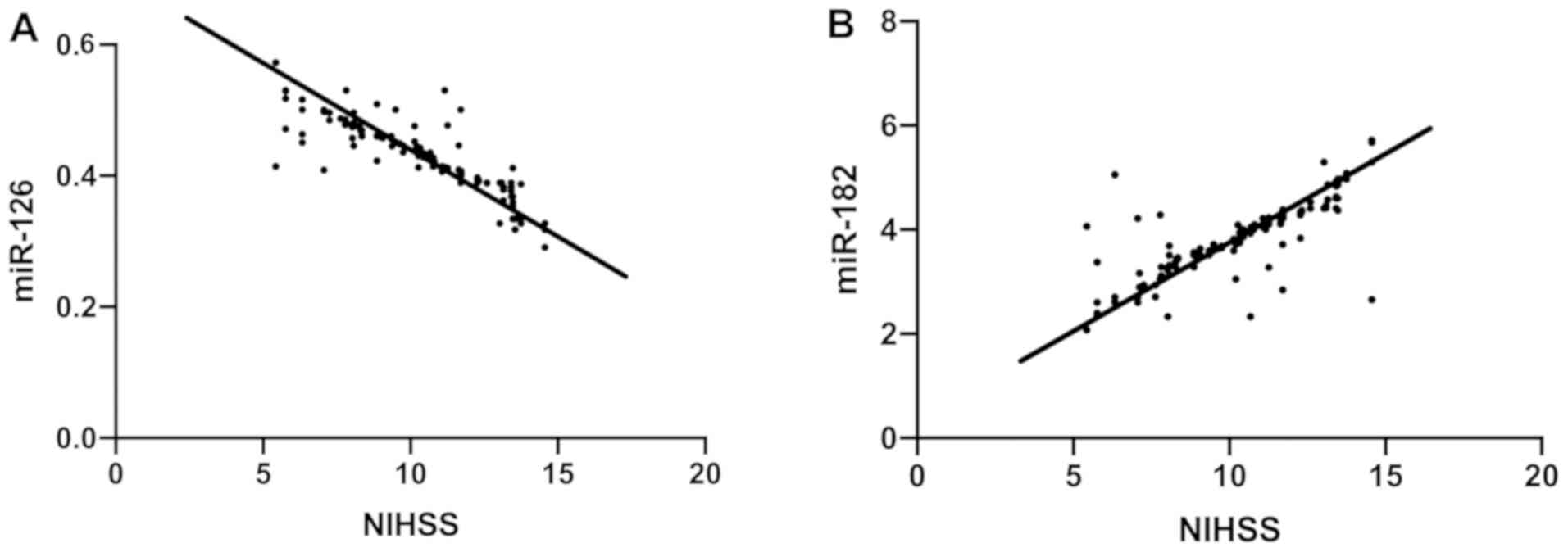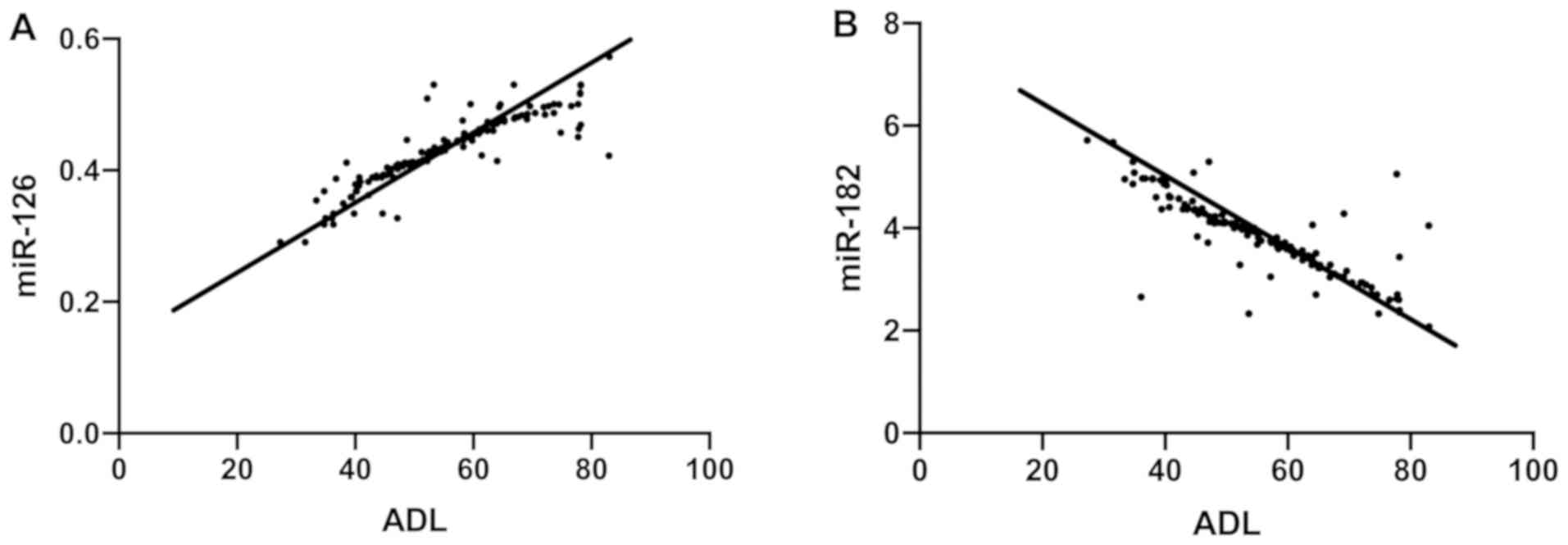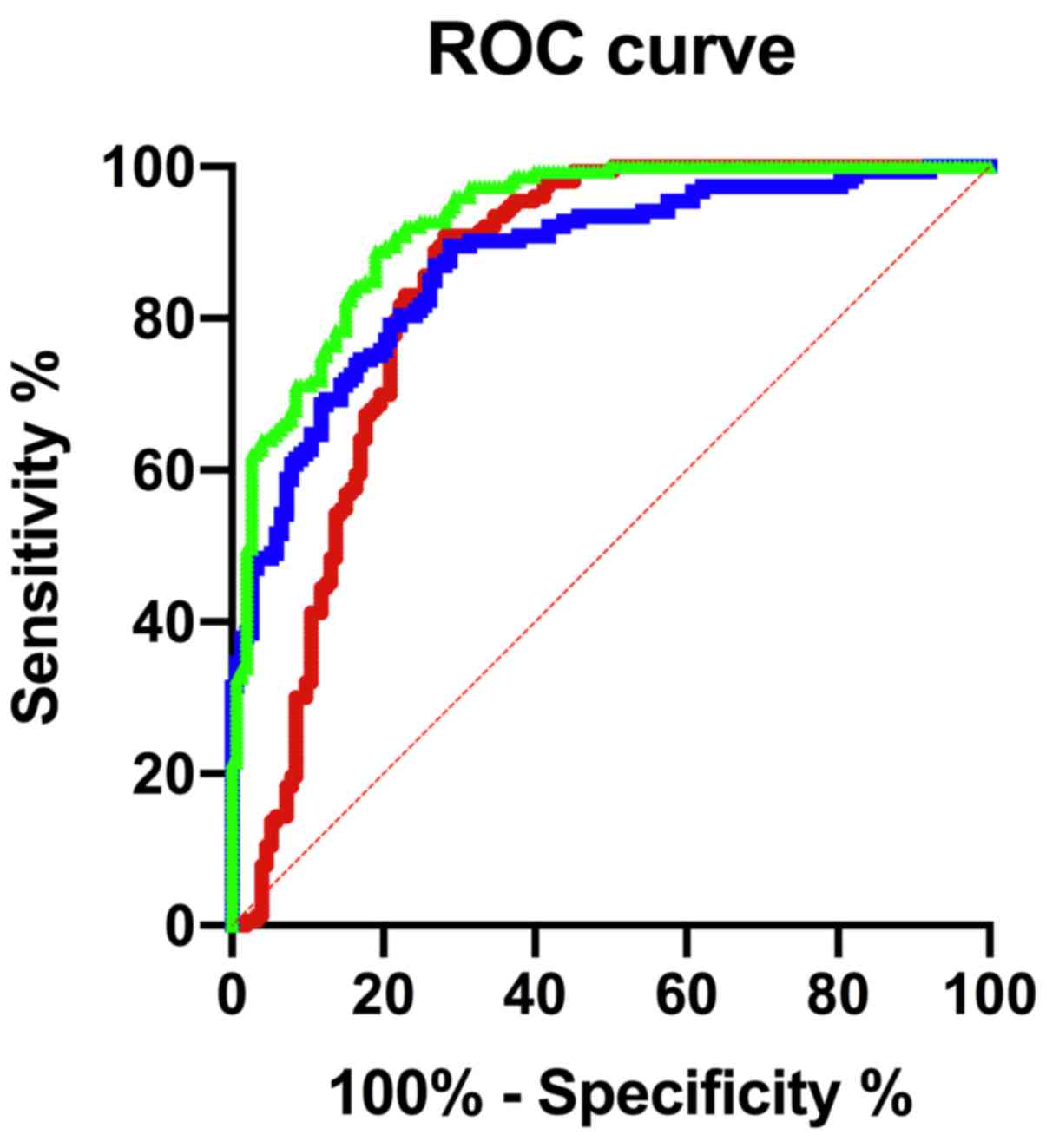|
1
|
Slivka AP, Notestine MA, Li J and
Christoforidis GA: Clinical predictors of cerebrovascular occlusion
for patients presenting with acute stroke. J Stroke Cerebrovasc
Dis. 15:30–33. 2006. View Article : Google Scholar : PubMed/NCBI
|
|
2
|
Appiah KO, Minhas JS and Robinson TG:
Managing high blood pressure during acute ischemic stroke and
intracerebral hemorrhage. Curr Opin Neurol. 31:8–13. 2018.
View Article : Google Scholar : PubMed/NCBI
|
|
3
|
Lawrence ES, Coshall C, Dundas R, Stewart
J, Rudd AG, Howard R and Wolfe CD: Estimates of the prevalence of
acute stroke impairments and disability in a multiethnic
population. Stroke. 32:1279–1284. 2001. View Article : Google Scholar : PubMed/NCBI
|
|
4
|
Bertog SC, Grunwald IQ, Kühn AL, Vaskelyte
L, Hofmann I, Gafoor S, Reinartz M, Matic P and Sievert H: Acute
stroke intervention. Interventional Cardiology: Principles and
Practice. Second. Dangas GD, Di Mario C, Kipshidze NN, Barlis P,
Addo T and Serruys PW: Wiley Online Library; pp. 641–652. 2017
|
|
5
|
Sicras-Mainar A, Planas-Comes A,
Frias-Garrido X, Navarro-Artieda R, de Salas-Cansado M and
Rejas-Gutiérrez J: Statins after recent stroke reduces recurrence
and improves survival in an aging Mediterranean population without
known coronary heart disease. J Clin Pharm Ther. 37:441–447. 2012.
View Article : Google Scholar : PubMed/NCBI
|
|
6
|
Cao Q, Liu F, Ji K, Liu N, He Y, Zhang W
and Wang L: MicroRNA-381 inhibits the metastasis of gastric cancer
by targeting TMEM16A expression. J Exp Clin Cancer Res. 36:292017.
View Article : Google Scholar : PubMed/NCBI
|
|
7
|
Chen Y, Song Y, Huang J, Qu M, Zhang Y,
Geng J, Zhang Z, Liu J and Yang GY: Increased circulating exosomal
miRNA-223 is associated with acute ischemic stroke. Front Neurol.
8:572017. View Article : Google Scholar : PubMed/NCBI
|
|
8
|
Ji B, Wang J, Ma X, Yi YB and Chen ZY:
Exosome and miRNA in stroke. Cellular and Molecular Approaches to
Regeneration and Repair. Springer; New York, NY: pp. 325–361.
2018
|
|
9
|
Florijn BW, Bijkerk R, van der Veer EP and
van Zonneveld AJ: Gender and cardiovascular disease: Are sex-biased
microRNA networks a driving force behind heart failure with
preserved ejection fraction in women? Cardiovasc Res. 114:210–225.
2018. View Article : Google Scholar : PubMed/NCBI
|
|
10
|
Cheng HL, Fu CY, Kuo WC, Chen YW, Chen YS,
Lee YM, Li KH, Chen C, Ma HP, Huang PC, et al: Detecting miRNA
biomarkers from extracellular vesicles for cardiovascular disease
with a microfluidic system. Lab Chip. 18:2917–2925. 2018.
View Article : Google Scholar : PubMed/NCBI
|
|
11
|
Giridharan VV, Quevedo J, Krishnamurthy P
and Thandavarayan RA: Editorial commentary: miRNA a tiny genetic
tool: Key to the puzzle of cardiovascular disease. Trends
Cardiovasc Med. 26:420–422. 2016. View Article : Google Scholar : PubMed/NCBI
|
|
12
|
Maitrias P, Metzinger-Le Meuth V, Nader J,
Reix T, Caus T and Metzinger L: The involvement of miRNA in
carotid-related stroke. Arterioscler Thromb Vasc Biol.
37:1608–1617. 2017. View Article : Google Scholar : PubMed/NCBI
|
|
13
|
Lee ST, Chu K, Jung KH, Yoon HJ, Jeon D,
Kang KM, Park KH, Bae EK, Kim M, Lee SK, et al: MicroRNAs induced
during ischemic preconditioning. Stroke. 41:1646–1651. 2010.
View Article : Google Scholar : PubMed/NCBI
|
|
14
|
Dunning K: National Institutes of Health
Stroke Scale. Encyclopedia of Clinical Neuropsychology. Kreutzer
JS, DeLuca J and Caplan B: Springer; New York, NY: pp. 1714–1715.
2011, View Article : Google Scholar
|
|
15
|
Bramlett HM and Dietrich WD:
Pathophysiology of cerebral ischemia and brain trauma: Similarities
and differences. J Cereb Blood Flow Metab. 24:133–150. 2004.
View Article : Google Scholar : PubMed/NCBI
|
|
16
|
Suda S, Katsura K, Kanamaru T, Saito M and
Katayama Y: Valproic acid attenuates ischemia-reperfusion injury in
the rat brain through inhibition of oxidative stress and
inflammation. Eur J Pharmacol. 707:26–31. 2013. View Article : Google Scholar : PubMed/NCBI
|
|
17
|
Liebeskind DS, Sanossian N, Yong WH,
Starkman S, Tsang MP, Moya AL, Zheng DD, Abolian AM, Kim D, Ali LK,
et al: CT and MRI early vessel signs reflect clot composition in
acute stroke. Stroke. 42:1237–1243. 2011. View Article : Google Scholar : PubMed/NCBI
|
|
18
|
Chen X, Yan CC, Zhang X, You ZH, Deng L,
Liu Y, Zhang Y and Dai Q: WBSMDA: Within and between score for
miRNA-disease association prediction. Sci Rep. 6:211062016.
View Article : Google Scholar : PubMed/NCBI
|
|
19
|
Kim JM, Jung KH, Chu K, Lee ST, Ban J,
Moon J, Kim M, Lee SK and Roh JK: Atherosclerosis-related
circulating MicroRNAs as a predictor of stroke recurrence. Transl
Stroke Res. 6:191–197. 2015. View Article : Google Scholar : PubMed/NCBI
|
|
20
|
Cui H and Yang L: Analysis of microRNA
expression detected by microarray of the cerebral cortex after
hypoxic-ischemic brain injury. J Craniofac Surg. 24:2147–2152.
2013. View Article : Google Scholar : PubMed/NCBI
|
|
21
|
Leung LY, Bartz TM, Rice K, Floyd J, Psaty
B, Gutierrez J, Longstreth WT Jr and Mukamal KJ: Blood pressure and
heart rate measures associated with increased risk of covert brain
infarction and worsening leukoaraiosis in older adults.
Arterioscler Thromb Vasc Biol. 37:1579–1586. 2017. View Article : Google Scholar : PubMed/NCBI
|
|
22
|
Sha RJ, Zhang Z, Yu TH, Yuan HL and Icu
DO: Etiological factor, risk factor and prognosis in young patients
with cerebral infarction and cerebral hemorrhage: comparative
analysis among 293 cases. Chin J Clin Rehabil. 26:794–798. 2004.(In
Chinese).
|
|
23
|
Wang S, Aurora AB, Johnson BA, Qi X,
McAnally J, Hill JA, Richardson JA, Bassel-Duby R and Olson EN: The
endothelial-specific microRNA miR-126 governs vascular integrity
and angiogenesis. Dev Cell. 15:261–271. 2008. View Article : Google Scholar : PubMed/NCBI
|
|
24
|
Fish JE, Santoro MM, Morton SU, Yu S, Yeh
RF, Wythe JD, Ivey KN, Bruneau BG, Stainier DY and Srivastava D:
miR-126 regulates angiogenic signaling and vascular integrity. Dev
Cell. 15:272–284. 2008. View Article : Google Scholar : PubMed/NCBI
|
|
25
|
Radom-Aizik S, Zaldivar FP Jr, Haddad F
and Cooper DM: Impact of brief exercise on circulating monocyte
gene and microRNA expression: Implications for atherosclerotic
vascular disease. Brain Behav Immun. 39:121–129. 2014. View Article : Google Scholar : PubMed/NCBI
|
|
26
|
Wang M, Wang W, Wang J and Zhang J:
MiR-182 promotes glucose metabolism by upregulating
hypoxia-inducible factor 1α in NSCLC cells. Biochem Biophys Res
Commun. 504:400–405. 2018. View Article : Google Scholar : PubMed/NCBI
|
|
27
|
Cheng HP, Gong D, Zhao ZW, He PP, Yu XH,
Ye Q, Huang C, Zhang X, Chen LY, Xie W, et al: MicroRNA-182
promotes lipoprotein lipase expression and atherogenesis by
targeting histone deacetylase 9 in apolipoprotein E-knockout mice.
Circ J. 82:28–38. 2017. View Article : Google Scholar : PubMed/NCBI
|
|
28
|
Schmidt MHH, Bicker F, Nikolic I, Meister
J, Babuke T, Picuric S, Müller-Esterl W, Plate KH and Dikic I:
Epidermal growth factor-like domain 7 (EGFL7) modulates Notch
signalling and affects neural stem cell renewal. Nat Cell Biol.
11:873–880. 2009. View
Article : Google Scholar : PubMed/NCBI
|
|
29
|
Lee YJ, Bernstock JD, Klimanis D and
Hallenbeck JM: Akt protein kinase, miR-200/miR-182 expression and
epithelialmesenchymal transition proteins in hibernating ground
squirrels. Front Mol Neurosci. 11:222018. View Article : Google Scholar : PubMed/NCBI
|


















